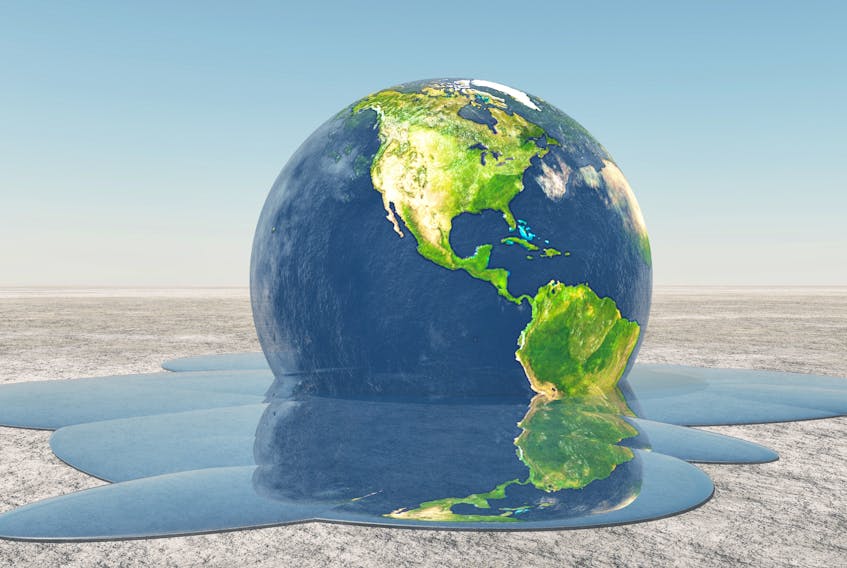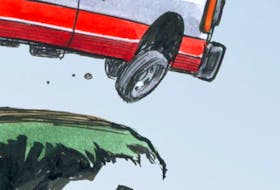It’s a once-in-a-lifetime trip!
Heck, it’s a once-in-any-number-of-lifetimes trip.

Baffin Island in summer: pictures show long, grey banks of broken rock, greyed, melting snow, huge banks of smoothed and rounded boulders. Runnels of glacial melt streaming down hillsides, cutting deep trenches in solid ice. There are huge sweeps of stone peaks and valleys, well above the tree line, and miles-long vistas reduced to the sweep and design of stone that has been pushed and mounded and left by ice.
Be sure to take in the glaciers while you’re there; if they keep disappearing at their current rate, they’ll be gone in our lifetime.
But don’t go for the glaciers or the vistas, go for the mosses.
Why the mosses? While they may be dead, they are a sight for sore eyes. They’re a sight for your eyes.
They’re a sight that hasn’t been seen by human eyes in generations.
Those scraggly, brown and grey dead mosses have spent the last 40,000 years under Baffin Island’s ice caps. There’s a possibility they could have been ice-bound for as long as 120,000 years, but carbon dating only goes back 40,000 years.
Yes, 40,000 years — when the Neanderthals were slipping into extinction. Before anything like modern civilization. And 125,000 years ago? That’s the last major warming period on Earth, when a collapse of the West Antarctic ice sheet saw sea levels rise by between six and nine metres.
You can join other people — scientists from Boulder, Colo. — who have come to see the mosses, too.
“We travel to the retreating ice margins, sample newly exposed plants preserved on these ancient landscapes and carbon date the plants to get a sense of when the ice last advanced over that location,” researcher Simon Pendleton of the University of Boulder’s Institute of Artic and Alpine Research said in a statement.
As the scientists put it in the journal Nature Communications, “Prior field observations suggest that once plants are exposed by ice recession, they are efficiently removed from the landscape by meltwater in summer and wind-blown snow in winter.”
New research is also pointing out that continued warming trends suggest thousands of Northern Hemisphere lakes could lose their winter ice cover — some 35,300 lakes in all.
In other words, if they’d been out from under the ice in years past, they’d be gone already. Some, startlingly, regrow — hence their nickname, “zombie mosses.” But if you’re looking at dead moss along the margins of melting ice caps, it’s almost certainly newly melted free of ice cover.
Imagine, you can be the very first person in thousands of years to clap eyes on that straggly little moss corpse. That’s worth the trip right there.
But while moss hunting may be in, ice fishing might well be out.
New research is also pointing out that continued warming trends suggest thousands of Northern Hemisphere lakes could lose their winter ice cover — some 35,300 lakes in all. In a higher-temperature model, the number of lakes losing their annual ice cover would rise to 230,400.
I can remember when the federal Department of Fisheries and Oceans changed the name of Newfoundland’s ice fishing season to the “Winter Fishing Season” instead, a quiet, tacit recognition that, even in the depths of winter, there could easily be open water.
The question, of course, is what the lack of ice will do to lakes and ponds. Will it mean warmer summer temperatures and algal blooms that degrade water quality? Will it mean anoxic conditions that kill lake fish?
Meanwhile, to the south of us, the president of the most powerful country on Earth believes that a deep freeze or a cold snap — a weather oscillation of a kind predicted by climate scientists as part of climate change — means that the Earth isn’t warming at all.
Ice may come and go, but it seems stupidity is with us forever.
Recent columns by this author
- RUSSELL WANGERSKY: New research links Alzheimer’s and gingivitis
- RUSSELL WANGERSKY: Don’t believe everything you see
Russell Wangersky’s column appears in 36 SaltWire newspapers and websites in Atlantic Canada. He can be reached at [email protected] — Twitter: @wangersky.









